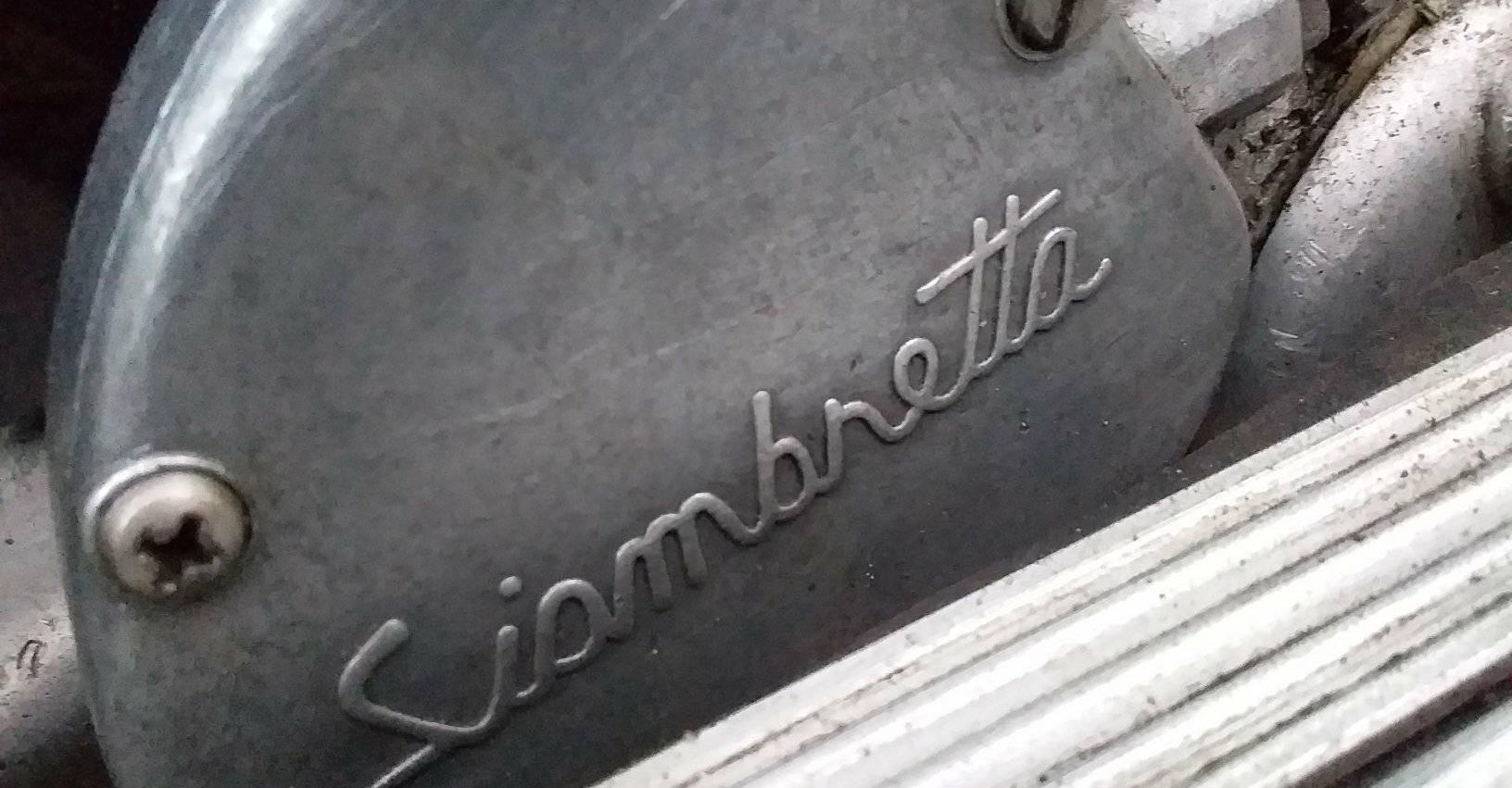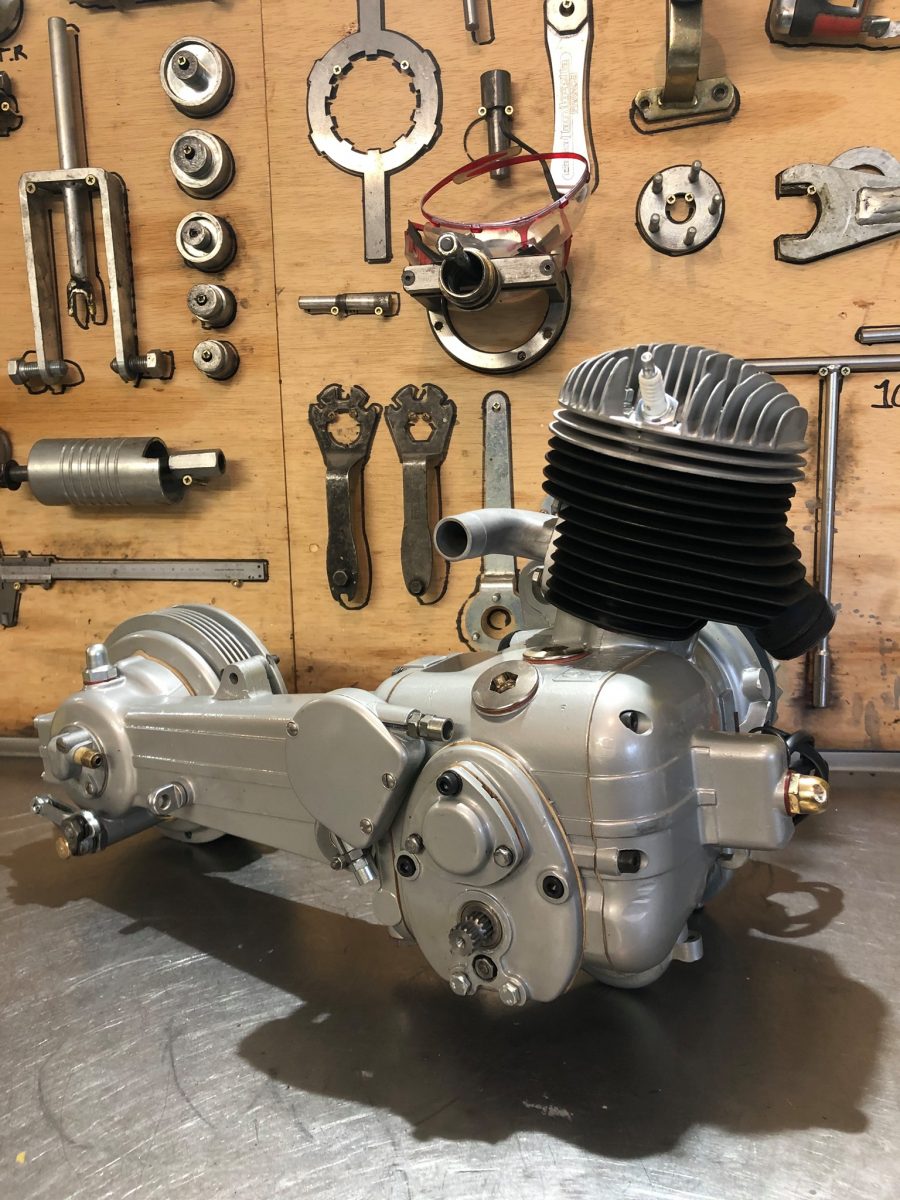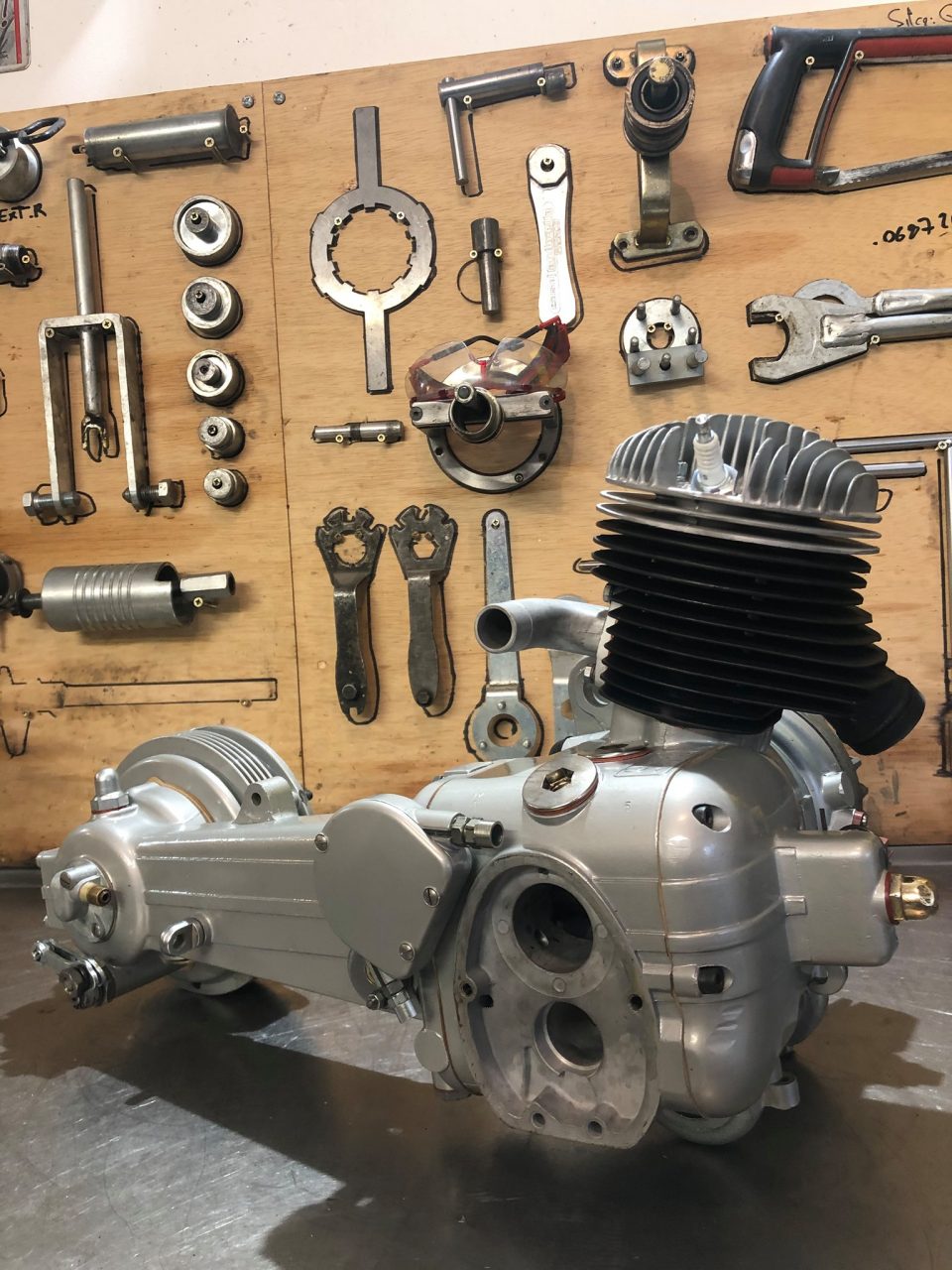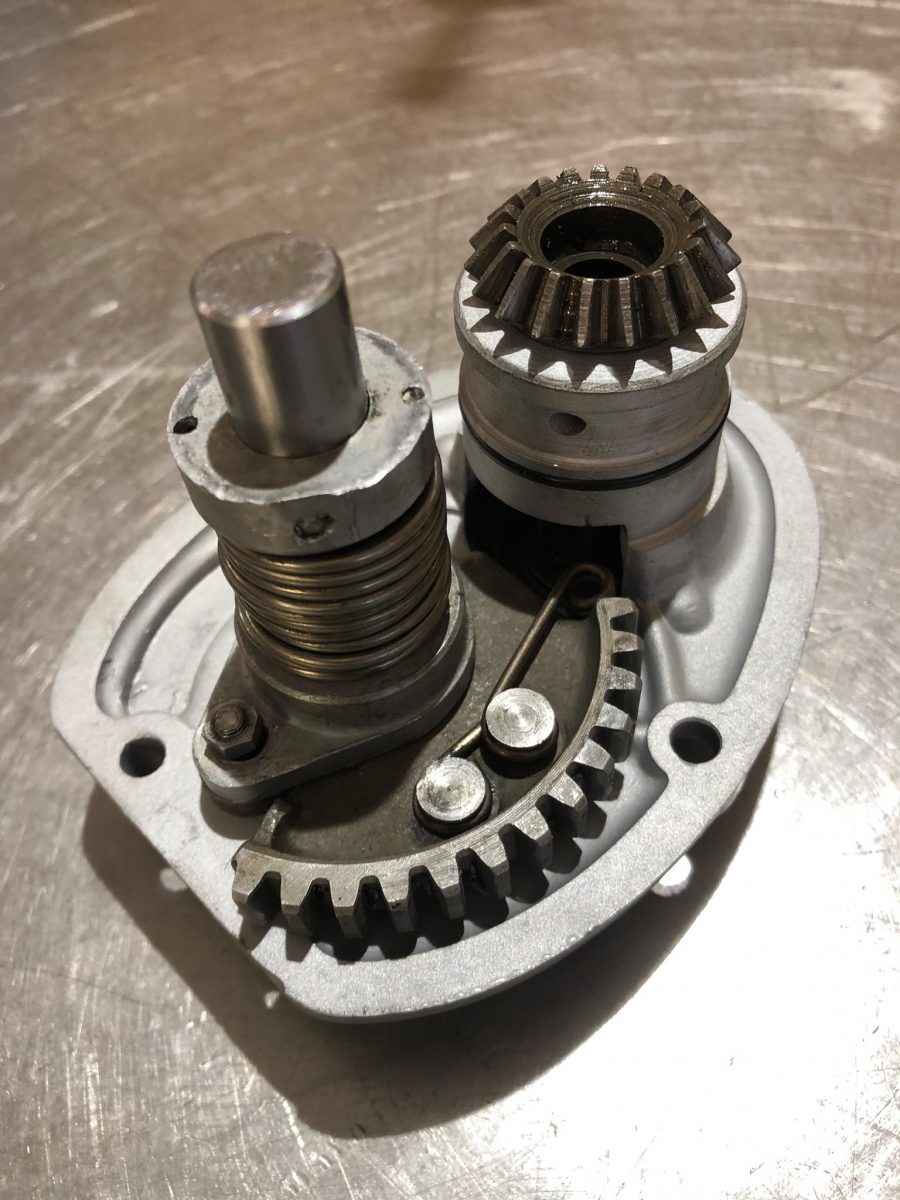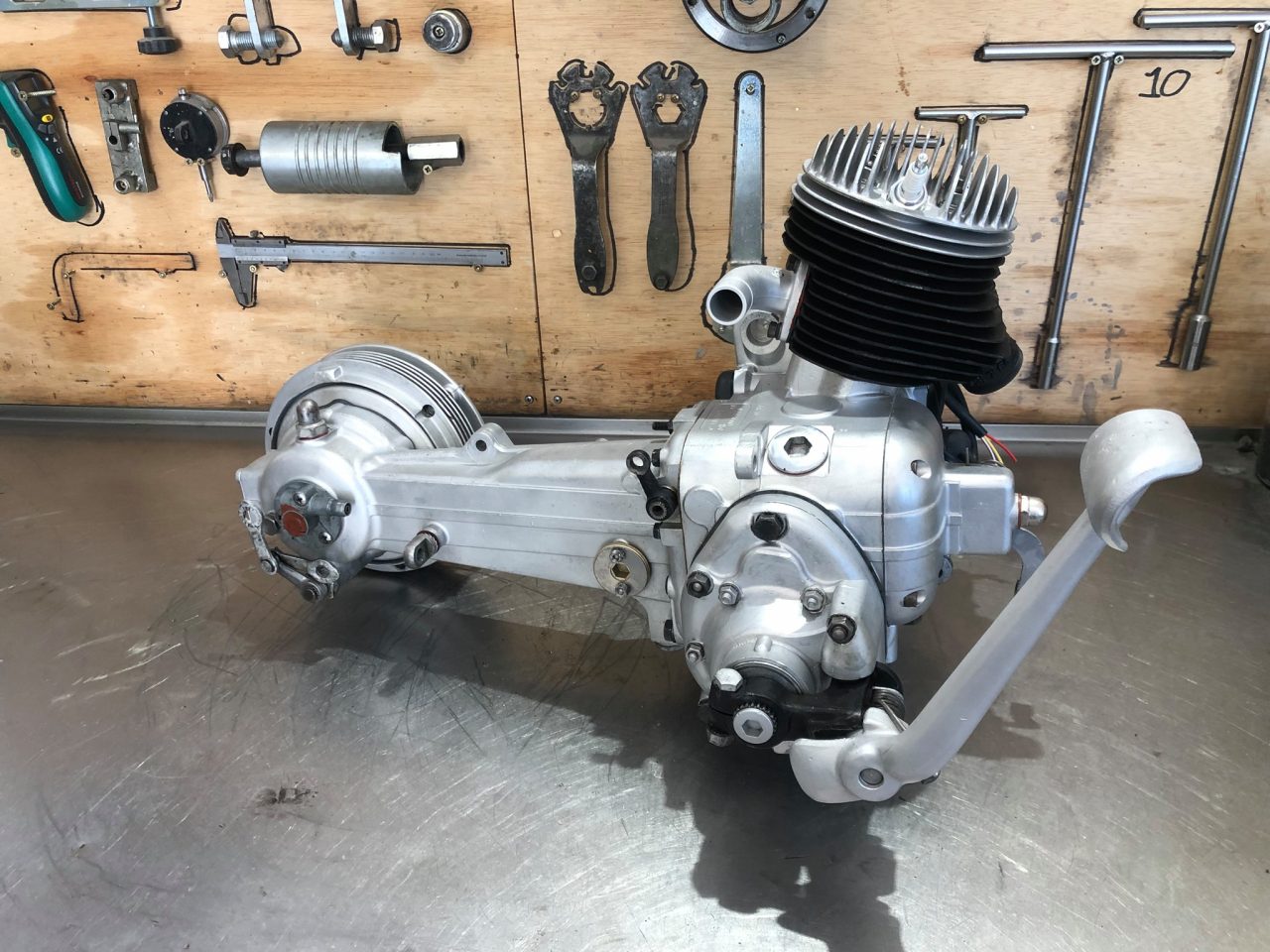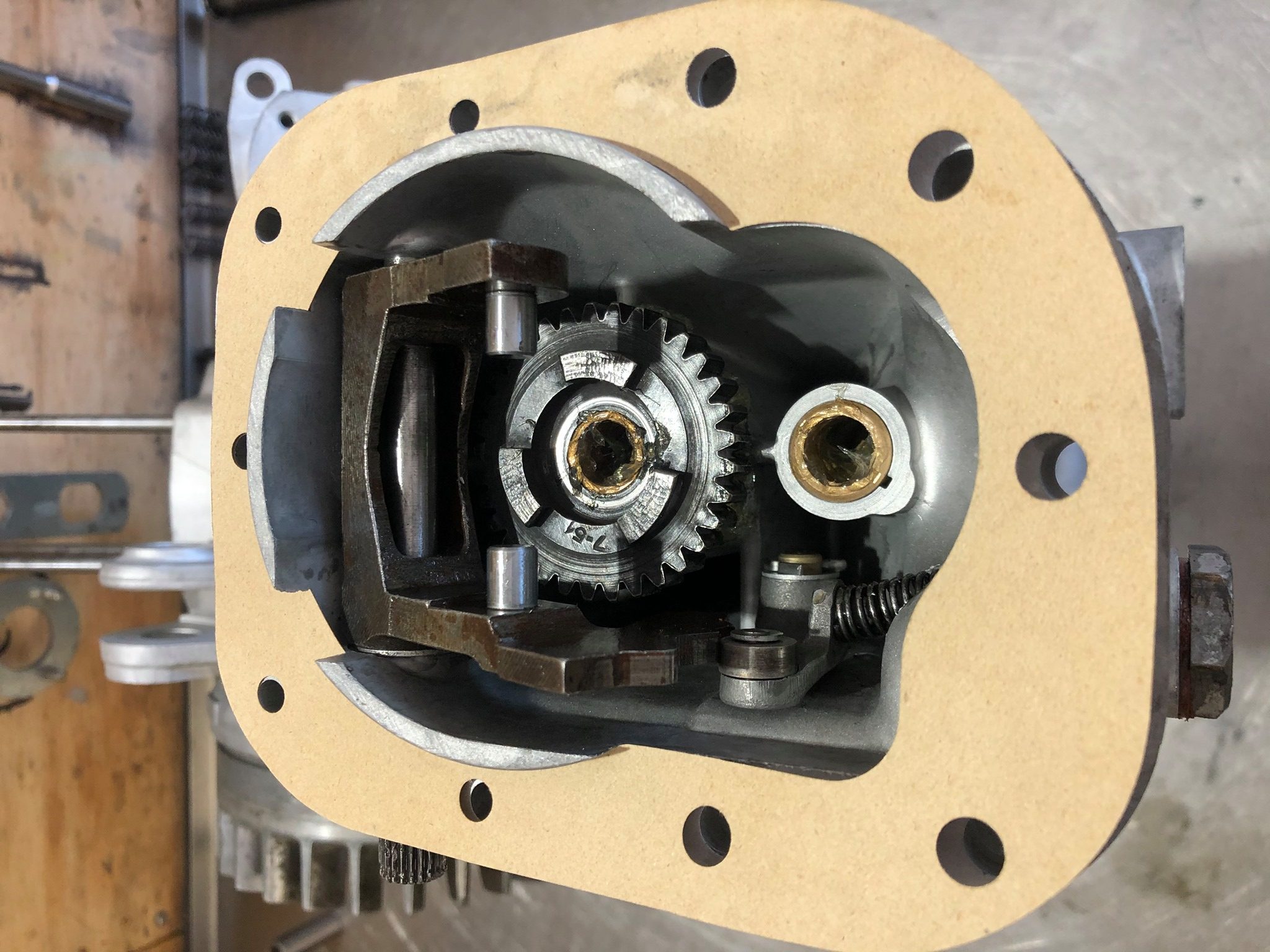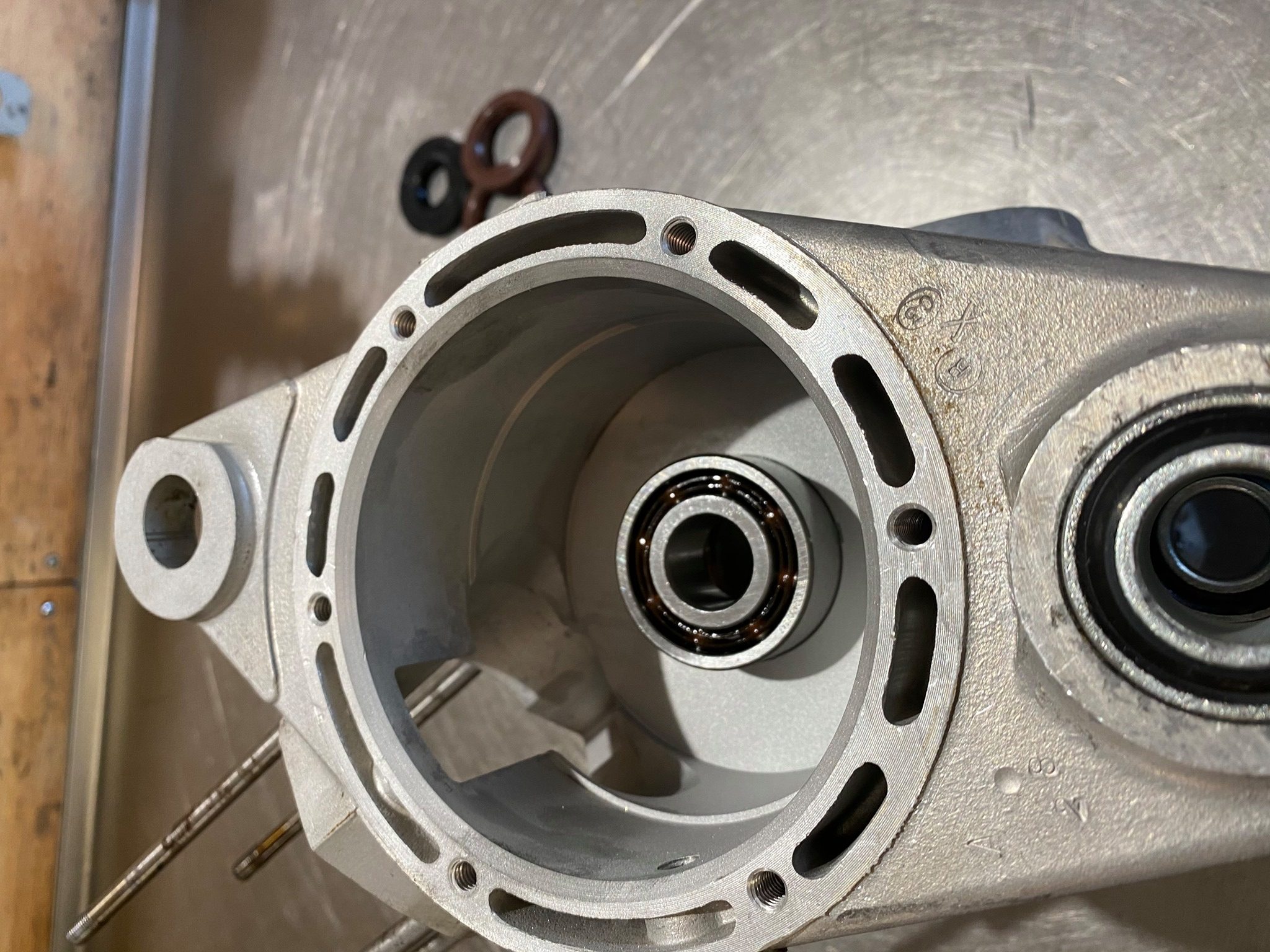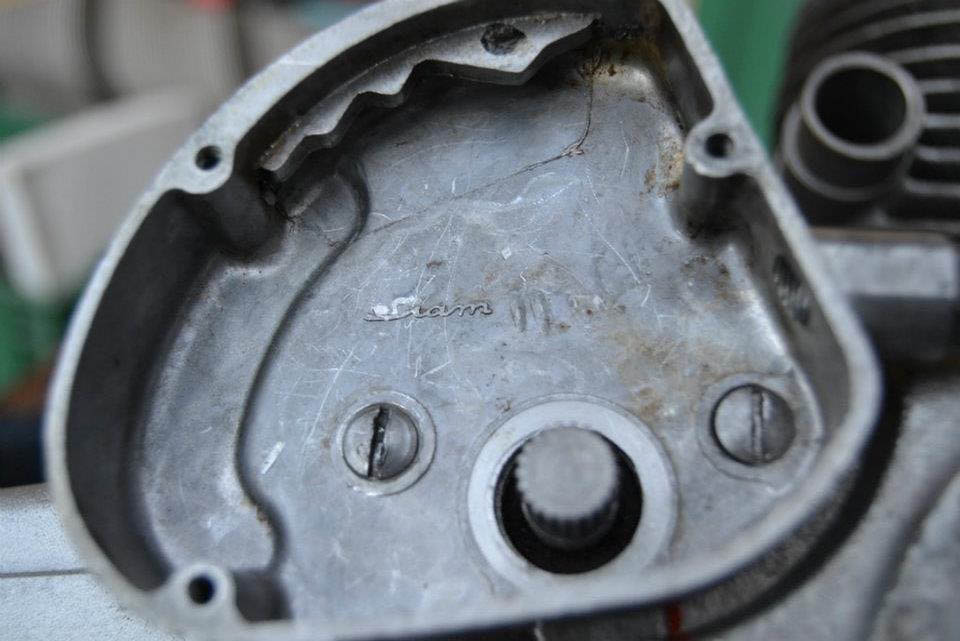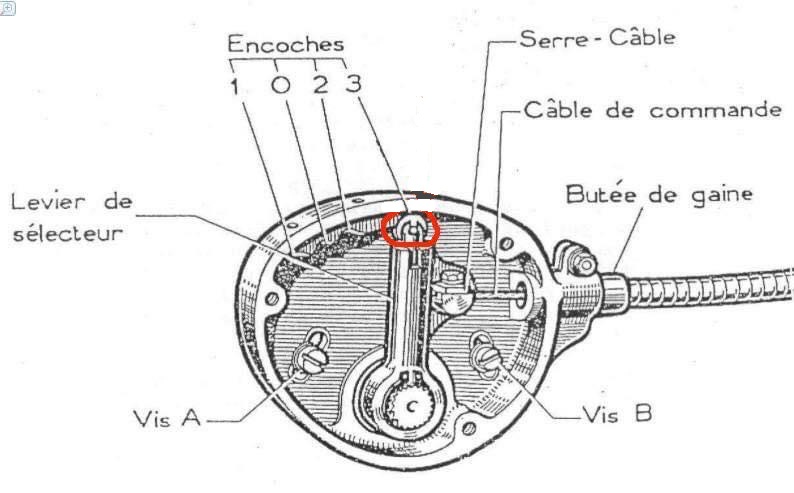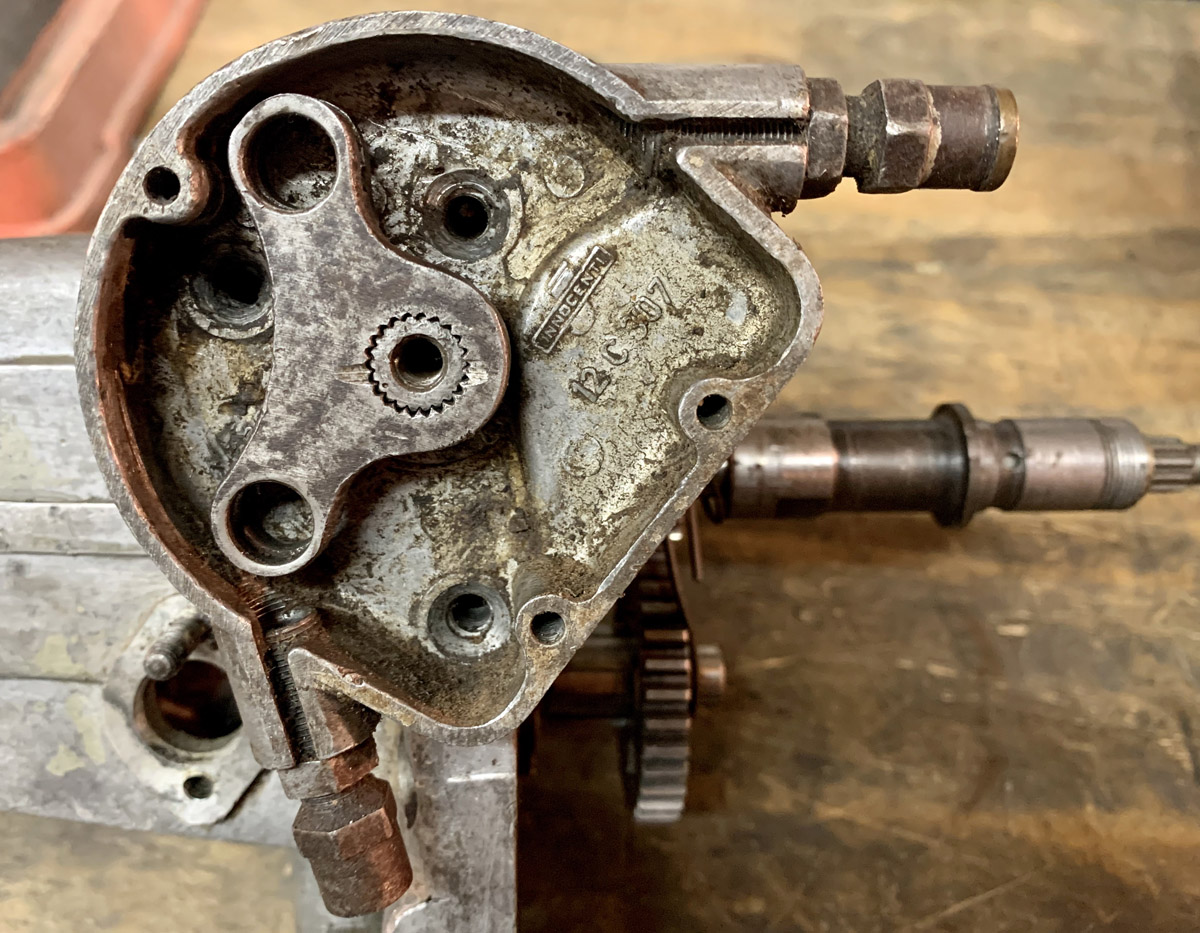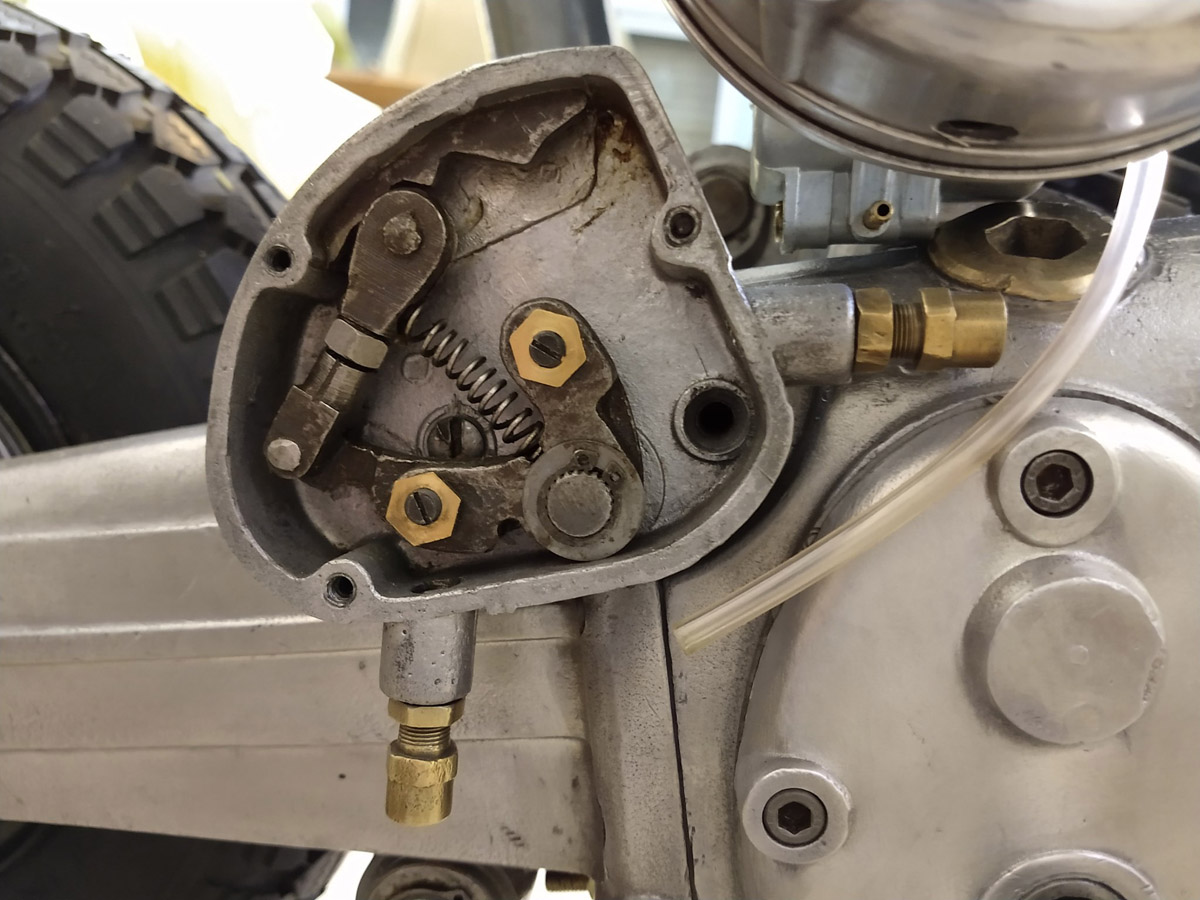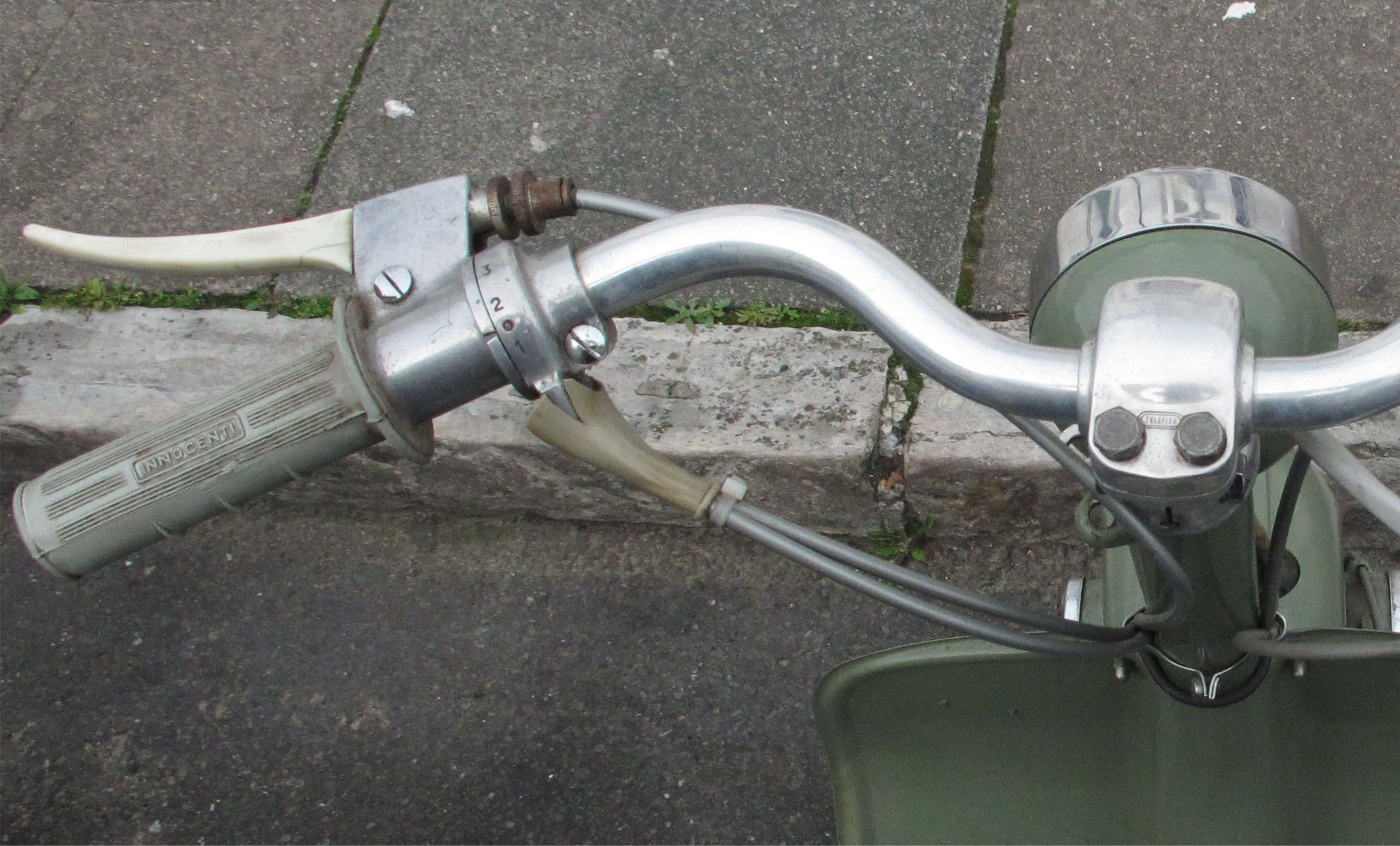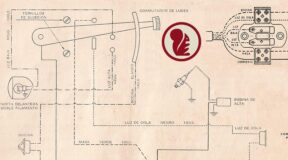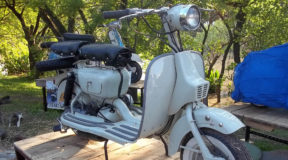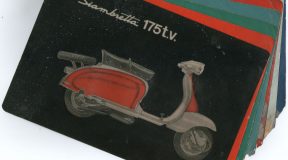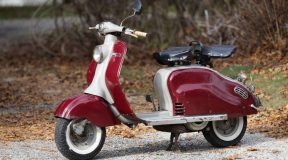The Siambretta 125 engine is the result of a confluence of designs and ideas taken from the different variations of the Lambretta D. Understanding its origins helps us to give more identity to our loved national Lambretta version, as well as help others to avoid “inappropriate mechanic”, typical of lack of information.
Before all, let’s take a tour through the different Lambretta D/LD versions, in order to get a better understanding of the origins of this story.
DISCLAIMER: When we mention Siambretta, we are talking about the scooter 100% manufactured in Argentina strictly. The Siamlambretta could have been released t0 the market with imported engines (or a mix between national and imported) and they are not covered in this article.
Lambretta D
The Lambretta model D -and its LD version- was, undoubtedly, the most popular model from the first Lambretta period (Lambrettas A to F), it was the Lambretta model with the longest time in production and, furthermore, the model that suffered more changes during its life. Although we are going to mention some aesthetical particularities, in this article we are going to put the focus on the engine.
Lambretta D/LD 125 mk1
It was the first Lambretta D version, which was in production between 1951 and late 1954 and its engine architecture was used in the Siambretta D/LD. In fact, the first Siamlambrettas (October 1954 – early 1956) were released to the market directly with this imported engine, as Siam had not time to import all the machinery to build it in Argentina.
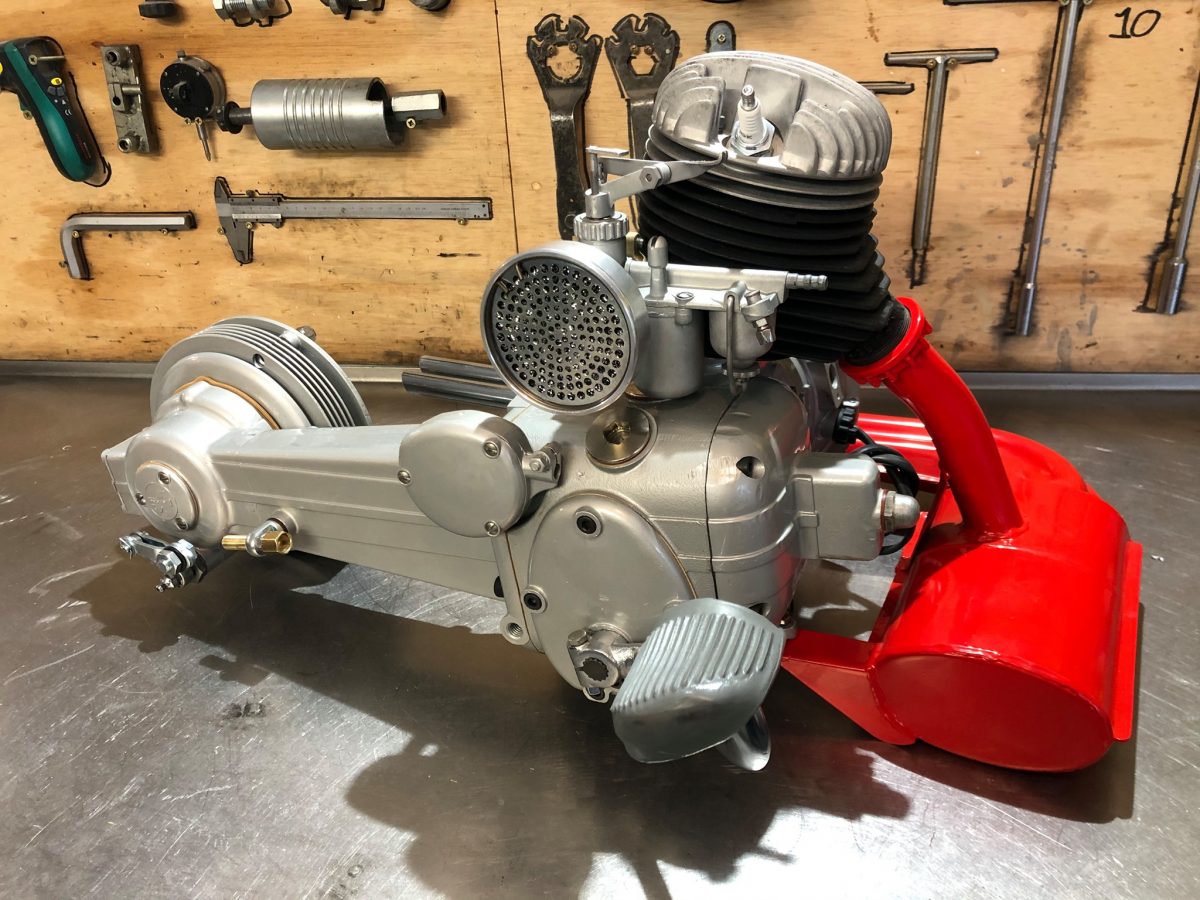 | 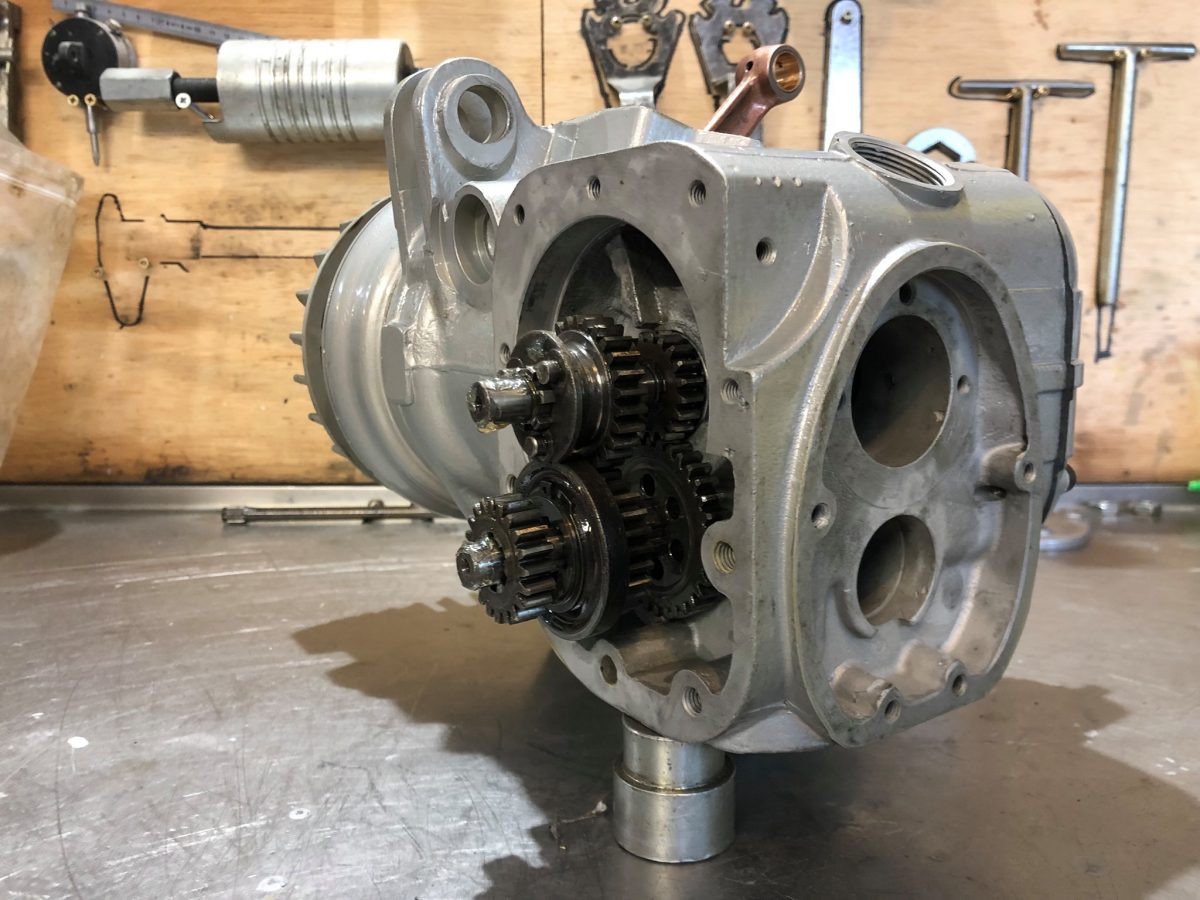 |
| Lambretta D mk1 engine | Lambretta D mk1 gearbox |
Broadly speaking, its engine’s main features are:
- Teleflex gear selector system.
- Rounded dogs on the gearbox and Z-shaped gear lever. The gear selector notches are located inside the selector box (Teleflex).
- Splitted Crankshaft.
- Rod-controlled rear brake on the very first units, replaced by cable later.
Lambretta D/LD 125 mk2
The second version of the Lambretta D engine (late 1954 to late 1956) has a little more engineering applied. Its engine’s internal architecture is very similar to the Siambretta LD 150, but its external fisionomy looks like its predecessor.
Its engine’s main features are:
- Twin-cable gear selector system (same as the Siambretta 150 LD).
- Improved gearbox ratio, that allows the scooter to climb up to 35 degrees hill without any problem. It has square Dogs in the gearbox’s gears and a C-shaped gear selector gate, with the selector notches on it, inside the gearbox.
- New single-piece Crankshaft with just one bearing on each side it, instead the two SKF 6203 from the mk1 engine.
- Reinforced Kickstart with the bevel pinion support integrated on its cover, but keeping the notched quadrant start system from the previous model.
- Air refrigerated engine by cowling.
- Removable manifold induction from the cylinder, unlike the mk1, which is integrated to it.
Early at the beginnings of the version, meanwhile Innocenti were transitioning from its previous version, there were produced 125 mk2 models, but they weren’t very successful.
Lambretta D/LD 125 mk3
The last version of this scooter (February 1957 to July 1958) was the version used by Siam to build the Siambretta 150 LD. In fact, we believe the Siambretta 150 engine was totally imported during its lifetime.
Its engine’s main features are:
- MK2 general engine architecture: Gearbox, gear selector and crackshaft are the same.
- Mechanical variable timing on the magneto.
- Redesigned elliptical kick start, making it almost indestructible (the mk2 engine kick start had several issues, some of them inherited from the mk1 kick start design).
This version -and its previous one- were produced in parallel with the subsequent Lambretta models (models E and F), mainly by request of the British market.
The Siambretta 125 D/LD engine
This article’s main motivation is that up to this moment, and after a long time reading and searching through different sources, we haven’t already found any Lambretta D with the “Adler-Cheese” (a kind of cheese sold in a triangular box in Argentina) shaped selector box, typical to find on any Siambretta. Even more, these parts are not mentioned in any Lambretta parts book.
The Siambretta 125 D/LD scooter was released for sale on October 24th 1954. At that moment, meanwhile Innocenti was starting the production of the Lambretta D 150 mk2, in Argentina SIAM was releasing for sale thousands of Siamlambrettas with mk1 engines, all of them imported.
Bearing this in mind, it’s very probable that SIAM couldn’t have found the spare parts when the Teleflex systems started to fail, because Innocenti was starting the Lambretta D mk2 production, with the twin-cable selector system. That could be the reason why, also, SIAM had not imported all the machinery needed to build the Teleflex system’s accessories.
We should remember that it’s not possible to fit the twin-cable gears selector from the mk2/mk3 model into the mk1 engine. Twin-cable gear selector system needs the selector notches to be inside the engine (in the gear selector gate), unlike the mk1 engine, that needs this selector notches must be in the selector box outside the engine.
Based on all this information, we believe SIAM had to workaround the problem of fitting a twin-cable gear selector system, from the mk2/3 engine, on an engine that doesn’t support it, as it originally uses Teleflex gear selector system. This forced SIAM to think about a new type of command inside the selector box, that hook that two cables, but with the selector notches inside the box. The result of all this development was the typical Adler-Cheese shaped selector box, a distinctive mark of any Siambretta around the world. It’s because of that we believe that you’ll never find that selector box on any Lambretta.
Additionally, we’ve arrived to an additional conclusion; the Siambretta 125 has the gear shift system of Lambretta D mk2/mk3 in the handlebar, not the Lambretta D mk1’s Teleflex gear shift, Lambretta model from whom is derived.
As we always say, Siambretta’s history is not stone written and, sadly, the real history was lost… or that’s what we believe. Therefore, the conclusions we arrived in this article are based on evidence taken from different authors and sources, with the only aim of understanding a little more about the origins of our beloved national Lambretta version. If you know about -or have- information related to this topic, and you like to share with all of us, contact us!
Special thanks to Neil Wicks for his help in the translation of this article. Lambretta’s manufacture dates taken from Vittorio Tessera’s book “Innocenti Lambretta: The Definitive History”. Engines images taken from Casa Lambretta France, AURun and Brooke Ballard en Facebook, all of them with previous authorization.
La traducción de esta página no fue realizada por un traductor profesional. Si encontrás errores y queres colaborar con la traducción del sitio, por favor contactate con nosotros


